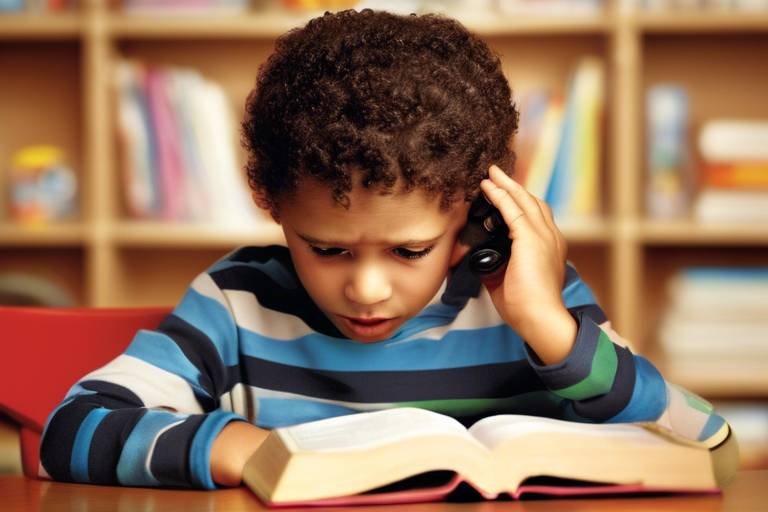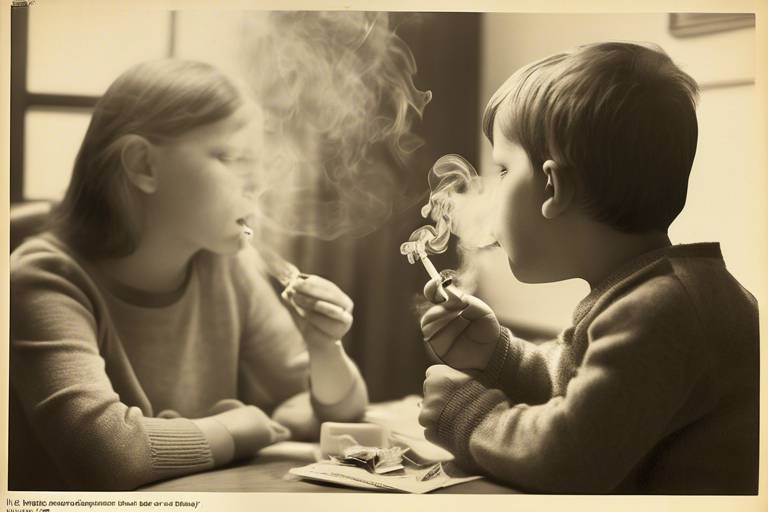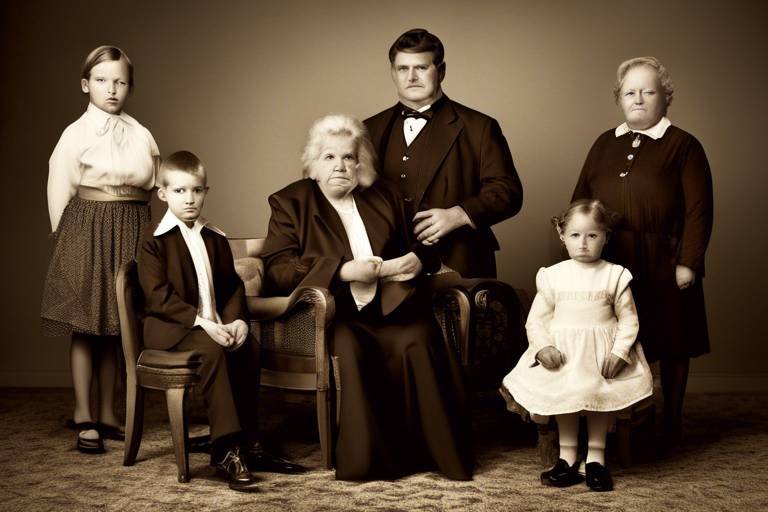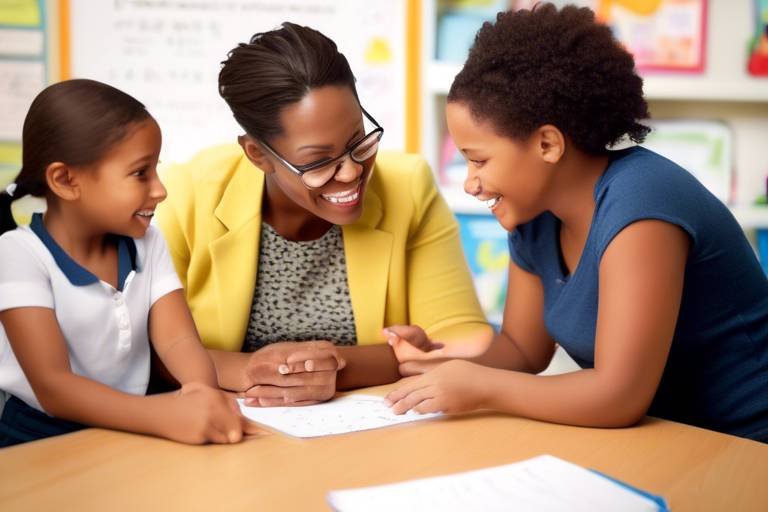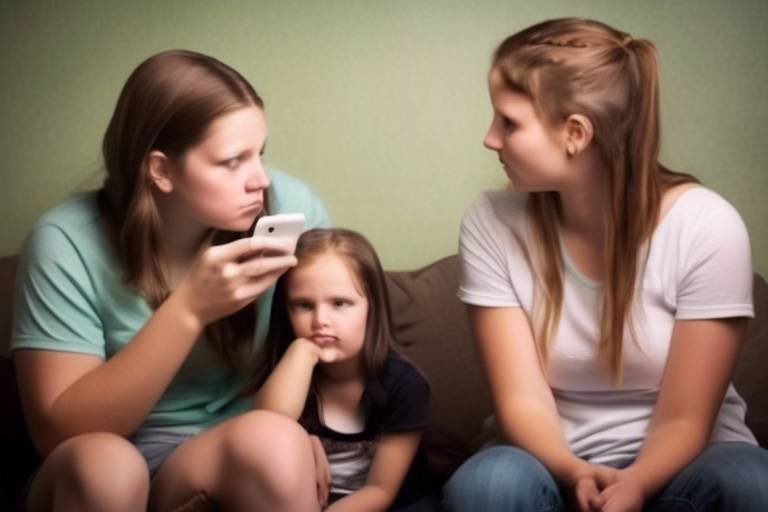Peer Pressure: Helping Your Child Make Independent Decisions
Peer pressure is a phenomenon that most of us have experienced at some point in our lives, but it can be particularly intense during childhood and adolescence. It's that invisible force that nudges kids to conform to the behaviors, attitudes, and choices of their friends or peers. As a parent, understanding how peer pressure works is essential in guiding your child to make independent decisions. This article explores the complexities of peer pressure, providing parents with strategies to help their children navigate social influences while fostering a sense of autonomy.
So, what exactly is peer pressure? At its core, peer pressure refers to the influence exerted by a peer group on an individual to change their attitudes, values, or behaviors in order to conform to group norms. There are two primary types of peer pressure: positive and negative. Positive peer pressure encourages behaviors that are constructive, like studying hard or participating in sports, while negative peer pressure can lead to risky behaviors, such as substance abuse or bullying.
Understanding the psychological factors that contribute to peer pressure is also crucial. Children are naturally inclined to seek acceptance and approval from their peers. This desire can lead them to make choices that don’t necessarily align with their values or beliefs, often resulting in internal conflict. By recognizing these dynamics, parents can better equip their children to make choices that reflect their true selves.
Identifying the signs of peer pressure is vital for parents who want to support their children effectively. Some common indicators include:
- Sudden changes in behavior or attitude.
- Increased secrecy or withdrawal from family activities.
- Changes in friendship groups or social circles.
- Unexplained anxiety or stress related to social situations.
By being observant and approachable, you can create an environment where your child feels safe discussing their experiences. This openness will help you understand the social pressures they face and guide them through these challenges.
As a parent, your role in helping your child navigate peer pressure cannot be overstated. One effective strategy is to foster open communication. Encourage your child to share their thoughts and feelings without fear of judgment. Additionally, teaching them to recognize and articulate their values can empower them to make choices that align with their beliefs, even when faced with peer pressure.
Another approach is to model independent decision-making. Children often learn by example, so demonstrating how to weigh options and consider consequences can provide them with a practical framework for making their own choices.
Self-esteem plays a pivotal role in a child's ability to resist negative peer influences. Children with a strong sense of self-worth are more likely to stand firm against peer pressure. Engaging your child in activities that promote self-esteem—like sports, arts, or volunteering—can significantly boost their confidence. Additionally, recognizing and celebrating their achievements, no matter how small, helps reinforce their self-image.
Creating a safe space for your child to express their thoughts and feelings is essential for understanding their experiences with peer pressure. Use active listening techniques, such as maintaining eye contact and reflecting back what they say, to demonstrate that you value their perspective. Avoid jumping to conclusions or offering immediate solutions; instead, ask open-ended questions that encourage deeper discussion.
Empowering your child with critical thinking skills can significantly enhance their ability to navigate peer pressure. Encourage them to ask questions about the choices they face and to consider the potential consequences of their actions. Role-playing different scenarios can also be a fun and effective way to practice decision-making skills in a low-pressure environment.
Role-playing can be an invaluable tool for preparing children to face peer pressure. For example, you might set up a scenario where your child is offered a cigarette at a party. Practicing how to respond assertively in this situation can build their confidence and prepare them for real-life challenges. Here are a few role-play scenarios to consider:
- Refusing drugs or alcohol at a party.
- Standing up against bullying.
- Choosing not to engage in gossip.
The friends your child chooses can significantly influence their experience with peer pressure. Encourage your child to seek friendships that are supportive and positive. Discuss the qualities of a good friend and help them understand that it’s okay to walk away from friendships that don’t align with their values. Nurturing healthy friendships can create a strong support system that helps them resist negative influences.
Numerous resources are available to assist families in navigating peer pressure. Here are a few valuable options:
- Books: "The Gift of Imperfection" by Brené Brown.
- Websites: Common Sense Media.
- Organizations: Teen Line.
These resources provide valuable information and support for both parents and children, helping them understand and combat peer pressure effectively.
Q: How can I tell if my child is being pressured by peers?
A: Look for changes in behavior, increased secrecy, or anxiety about social situations. Open communication is key to understanding their experiences.
Q: What should I do if my child is making poor choices due to peer pressure?
A: Engage in open discussions about their choices, help them identify their values, and encourage them to think critically about their decisions.
Q: Can role-playing really help my child deal with peer pressure?
A: Absolutely! Role-playing allows children to practice assertiveness and decision-making skills in a safe environment, preparing them for real-life situations.

Understanding Peer Pressure
Peer pressure is a powerful social force that can significantly influence children's behavior, often in ways that may seem subtle yet profound. At its core, peer pressure refers to the direct or indirect influence that a child's peers exert on their choices, actions, and attitudes. This can manifest in various forms, from the urge to conform to group norms to the more overt pressure to engage in specific behaviors, whether positive or negative. Understanding the nuances of peer pressure is crucial for parents who wish to guide their children through the treacherous waters of adolescence.
There are typically two types of peer pressure: positive peer pressure and negative peer pressure. Positive peer pressure encourages children to make constructive choices, such as studying harder or participating in extracurricular activities. In contrast, negative peer pressure can lead children to engage in risky behaviors, such as substance abuse or bullying, simply to fit in with their peers. Recognizing the difference is essential for parents, as it helps them to identify the influences their children face and to respond appropriately.
The psychological factors contributing to peer pressure are complex and multifaceted. Children are naturally inclined to seek acceptance from their peers, and this desire can sometimes overshadow their personal values and beliefs. Factors such as low self-esteem, the need for social validation, and a lack of decision-making skills can make children more susceptible to peer influence. It's akin to being in a crowded room where everyone is dancing to a particular tune; if you don't join in, you risk feeling isolated or left out. This analogy highlights the emotional stakes involved in peer dynamics, making it easier to understand why children may choose to follow the crowd, even when they know better.
Furthermore, the rise of social media has amplified the effects of peer pressure, creating an environment where children are constantly bombarded with images and messages that promote certain behaviors and lifestyles. The desire to be liked or followed can lead to unhealthy comparisons and choices. Parents need to be aware of how these platforms can affect their children's self-image and decision-making processes. By fostering open discussions about social media and its impact, parents can help their children navigate these challenges more effectively.
In summary, understanding peer pressure involves recognizing its definitions, types, and the underlying psychological factors that contribute to its influence. As parents, being aware of these elements allows for better guidance and support for children as they learn to make independent decisions amidst the social influences that surround them.

Recognizing Signs of Peer Pressure
Peer pressure can be a sneaky beast, often creeping into our children's lives without us even realizing it. As parents, it's crucial to be vigilant and recognize the signs that your child might be feeling the weight of social influence. One of the first indicators is a noticeable change in behavior. Has your usually outgoing child suddenly become withdrawn, or has their personality shifted dramatically? These changes may signal that they are struggling with peer expectations.
Another sign to look out for is a change in interests or activities. If your child suddenly starts showing interest in things they previously disregarded, like a new group of friends who engage in risky behaviors, it might be time to dig deeper. Children often feel pressured to conform to the interests of their peers, even if those interests don't align with their true selves. This can lead to feelings of confusion and frustration.
Additionally, pay attention to their language and expressions. If your child begins using phrases like, "Everyone is doing it," or "I have to fit in," it can indicate that they are feeling pressured to conform. These statements often reflect a desire to belong, which can be a double-edged sword. While wanting to fit in is a natural part of growing up, it can also lead to poor decision-making if left unchecked.
It's also important to observe how your child interacts with their peers. Do they seem anxious or stressed when discussing their friends or social situations? This anxiety can manifest in various ways, such as changes in eating or sleeping patterns. If your child is exhibiting signs of stress, it may be a red flag indicating that they are navigating a challenging social landscape.
Here are some common signs of peer pressure to watch for:
- Sudden change in friendships
- Increased secrecy about social activities
- Decline in academic performance
- Changes in mood or emotional state
Recognizing these signs early can make a significant difference in how you approach the situation. It’s essential to foster an open dialogue with your child, encouraging them to share their feelings and experiences without fear of judgment. By creating a safe space for communication, you can help them navigate the complexities of peer pressure more effectively.
Q: How can I talk to my child about peer pressure?
A: Start by having an open conversation where you express your concerns. Ask them about their friends and how they feel in social situations. Listen actively and validate their feelings.
Q: What if my child denies experiencing peer pressure?
A: Children may not recognize peer pressure when it happens. Encourage them to reflect on their feelings and experiences, and share examples of peer pressure you faced at their age to help them relate.
Q: Are there specific age groups more susceptible to peer pressure?
A: While peer pressure can affect children of all ages, it tends to peak during adolescence when social dynamics become more complex, and the desire for acceptance intensifies.
Q: How can I help my child build resilience against peer pressure?
A: Encourage them to engage in activities that boost self-esteem and teach them to think critically about their choices. Role-playing scenarios can also be beneficial in preparing them for real-life situations.

The Role of Parents in Mitigating Peer Pressure
As a parent, you hold a significant influence over your child's development and decision-making skills. In the whirlwind of adolescence, where peer pressure can feel like a tidal wave, your guidance becomes a lighthouse, steering them toward safe shores. It's essential to realize that your involvement can either empower your child to make independent choices or leave them vulnerable to external influences. So, how can you effectively mitigate the effects of peer pressure? Let's dive into some strategies that can make a real difference.
First and foremost, fostering an open dialogue with your child is crucial. This means creating an environment where they feel comfortable discussing their feelings and experiences without the fear of judgment. Regularly check in with them about their friendships and social interactions. Ask questions like, “How was school today?” or “What did you do with your friends?” This not only shows that you care but also opens the door for deeper conversations about any pressures they might be facing.
Another effective approach is to model healthy decision-making. Children often learn by example, so demonstrating how to navigate social situations can be invaluable. Share your own experiences with peer pressure, whether it was in school or at work. Talk about the choices you made and the outcomes that followed. By doing this, you're not just telling them what to do; you're showing them how to think critically about their own choices.
Moreover, it’s vital to reinforce the idea that it’s okay to say “no.” Equip your child with practical phrases they can use when faced with peer pressure. For instance, they might say, “I’d rather not,” or “I’m not comfortable with that.” Role-playing these scenarios can be particularly effective, as it allows your child to practice assertiveness in a safe space. Remember, the goal is to empower them to stand firm in their beliefs and values, even when faced with opposition.
Additionally, encourage your child to choose friends wisely. Discuss the qualities of a good friend and why surrounding themselves with positive influences is essential. You might even consider creating a friendship checklist with them, highlighting traits like kindness, respect, and supportiveness. This can help them identify friendships that uplift them rather than drag them down.
Lastly, don't underestimate the power of involvement in your child's life. Engage in activities together, whether it's sports, arts, or community service. This not only strengthens your bond but also instills a sense of belonging and self-worth in your child. When they feel secure in their identity and their relationship with you, they're less likely to succumb to negative peer pressure.
In summary, as a parent, your role in helping your child navigate peer pressure is multifaceted. By fostering open communication, modeling good decision-making, teaching assertiveness, guiding friendship choices, and remaining actively involved in their lives, you can significantly mitigate the effects of peer pressure. Remember, it’s all about giving them the tools they need to make independent choices and stand strong against the tide of social influence.
- What are some signs my child is experiencing peer pressure? Look for changes in behavior, such as withdrawing from family, changes in friendships, or a sudden interest in activities they previously disliked.
- How can I encourage my child to talk about peer pressure? Create a safe and open environment by regularly discussing their day and experiences, showing empathy, and actively listening without judgment.
- What if my child doesn’t want to talk about their friends? Respect their boundaries but gently encourage them by sharing your own experiences and expressing your concerns.

Building Self-Esteem in Children
Building self-esteem in children is one of the most impactful gifts you can give them. Think of self-esteem as the sturdy foundation of a house; without it, everything else can come crumbling down. When children feel good about themselves, they are more likely to resist negative peer influences and make independent choices. So, how do we, as parents, help our kids develop this crucial trait?
First and foremost, it's essential to create an environment where children feel valued and appreciated. This means celebrating their achievements, no matter how small. For instance, if your child successfully completes a challenging homework assignment or even just tries their best, acknowledging their effort can boost their confidence. Remember, it's not always about the outcome; it's about the journey and the courage to try.
Another effective method is to encourage children to engage in activities that they are passionate about. Whether it's sports, music, art, or science, allowing them to explore their interests can significantly enhance their self-worth. When children excel in something they love, they develop a sense of mastery and accomplishment. This can be a powerful antidote to peer pressure, as they will be more inclined to stick to their values and interests rather than succumb to the influence of others.
Additionally, teaching children to set realistic goals can help them build self-esteem. When children achieve these goals, they experience a sense of success that reinforces their belief in their abilities. For example, if a child sets a goal to read a certain number of books in a month, reaching that goal can provide a significant confidence boost. It's essential to guide them in setting these goals to ensure they are attainable yet challenging.
Another key aspect of building self-esteem is promoting positive self-talk. Children often internalize the messages they hear from their surroundings, including their own thoughts. Encourage them to replace negative thoughts with positive affirmations. For instance, instead of thinking, "I can't do this," they could say, "I will try my best." This shift in mindset can help them face challenges with a more resilient attitude.
Moreover, fostering strong social connections is vital for a child's self-esteem. Encourage your child to form friendships with peers who uplift and support them. It's important to guide them in recognizing the qualities of healthy friendships, such as respect, kindness, and mutual support. You can even discuss the traits they admire in their friends and how those traits reflect on their own self-worth.
In summary, building self-esteem in children is a multifaceted process that requires patience and effort. By creating a supportive environment, encouraging passions, setting realistic goals, promoting positive self-talk, and fostering healthy friendships, parents can equip their children with the tools they need to navigate peer pressure with confidence. Remember, every little step counts, and the more you invest in their self-esteem, the more resilient they will become!
- What are some signs that my child has low self-esteem? Look for signs such as excessive self-criticism, withdrawal from social situations, or a reluctance to try new things.
- How can I encourage my child to take risks without feeling pressured? Teach them that making mistakes is a part of learning and growth. Celebrate their efforts rather than just the outcomes.
- Are there specific activities that help build self-esteem? Yes! Activities like team sports, art classes, or even volunteering can enhance a child's self-worth and social skills.

Effective Communication Techniques
When it comes to helping your child navigate the tumultuous waters of peer pressure, effective communication is your best ally. Think of it as the sturdy lifeboat that keeps your child afloat amidst the waves of social influence. But how do you create a communication environment where your child feels safe and empowered to share their thoughts? First, it's essential to establish a non-judgmental atmosphere. This means actively listening to your child without jumping to conclusions or reprimanding them for their feelings. Instead of saying, "You shouldn't feel that way," try responding with, "I understand that this is tough for you." This simple shift can open the door to deeper discussions.
Another key technique is to ask open-ended questions. Rather than yes-or-no questions, encourage your child to express themselves more fully. For instance, instead of asking, "Did you have a good day at school?" you might say, "What was the best part of your day?" This invites them to share more about their experiences, including any instances of peer pressure they may have faced. Additionally, make it a habit to check in regularly. A simple, "Hey, how's everything going with your friends?" can signal to your child that you're genuinely interested in their social life.
Moreover, using relatable scenarios can help bridge the gap between your child's experiences and your guidance. You might share a story from your own childhood where you faced peer pressure. This not only humanizes you in their eyes but also provides a real-life example of how to deal with similar situations. Remember, your child is more likely to open up if they feel like you truly understand what they’re going through.
Visual aids can also be an effective communication tool. Consider creating a feelings chart together, where your child can point out how they feel in various situations. This can help them articulate their emotions better, making it easier for you to understand their perspective. Here’s a simple example of what a feelings chart might look like:
| Emotion | Situation | Response |
|---|---|---|
| Happy | Made a new friend | Share the joy |
| Sad | Excluded from a group | Talk about it |
| Confused | Peer pressure to try something risky | Ask for advice |
Lastly, always reinforce the idea that it’s okay to say “no.” Encourage your child to practice assertiveness in low-stakes situations. This could be as simple as declining an invitation to a movie they’re not interested in. Role-playing these scenarios can be incredibly beneficial. You could take turns being the child and the friend, practicing how to respond to peer pressure in a safe environment. This not only builds confidence but also equips them with the tools they need to handle real-life situations.
In summary, effective communication is about creating a safe space for your child to express their feelings, using relatable scenarios, and practicing assertiveness. By employing these techniques, you not only strengthen your relationship with your child but also empower them to make independent decisions, even in the face of peer pressure.
- What if my child refuses to talk about peer pressure?
It’s important to remain patient and persistent. Sometimes, kids need time to process their feelings before they’re ready to share. - How can I tell if my child is experiencing peer pressure?
Look for changes in behavior, mood swings, or a sudden shift in friend groups. These can be indicators of peer influence. - Should I intervene if my child is being pressured?
Yes, but approach the situation delicately. Discuss the issue with your child first to understand their perspective before taking action.

Encouraging Critical Thinking Skills
In today's fast-paced world, critical thinking is more essential than ever, especially for children navigating the tricky waters of peer pressure. It's not just about saying "no" to something that doesn't feel right; it's about understanding the implications of their choices and making informed decisions. So, how can parents help cultivate this invaluable skill in their kids? Let’s dive in!
First off, fostering critical thinking starts with creating an environment where questions are encouraged. Instead of simply providing answers, parents can prompt their children to think deeper by asking open-ended questions. For instance, when your child comes home with a story about a friend who pressured them into doing something risky, instead of immediately reacting, you might ask, “What do you think about that situation?” or “How did that make you feel?” This approach not only encourages them to articulate their thoughts but also helps them to process their feelings and experiences.
Moreover, engaging in activities that require problem-solving can significantly enhance critical thinking skills. Board games, puzzles, and even certain video games can encourage strategic thinking and decision-making. For example, games like chess or strategy-based video games require players to think several steps ahead, weighing their options and considering the consequences of their actions. These activities can serve as fun yet effective ways to sharpen a child's analytical abilities.
Another effective method is to discuss real-world scenarios that involve ethical dilemmas or peer pressure situations. This can be done through storytelling or even watching movies together that depict characters facing tough choices. Afterward, parents can facilitate a discussion by asking questions such as:
- What would you have done in that situation?
- Why do you think the character made that choice?
- What are the potential outcomes of different decisions?
These conversations not only help children think critically about various situations but also prepare them for similar challenges they might face in real life.
Additionally, teaching children to evaluate information critically is crucial in a world inundated with media and online content. Parents can guide them on how to discern credible sources from unreliable ones, fostering a sense of skepticism and inquiry. For instance, when discussing news articles or social media posts, parents can ask their children to consider the source, the evidence presented, and the potential biases involved. This practice not only builds critical thinking but also empowers children to become informed consumers of information.
Lastly, it’s essential to celebrate their successes in critical thinking. When your child makes a thoughtful decision or articulates a well-reasoned opinion, acknowledge it! This positive reinforcement encourages them to continue developing these skills. You could say something like, “I really liked how you thought that through; it shows you’re becoming more independent in your decision-making.”
By nurturing critical thinking skills, parents equip their children with the tools necessary to navigate peer pressure confidently and independently. It’s not just about resisting the influence of others; it’s about making choices that align with their values and beliefs, ultimately leading to a more fulfilling and authentic life.
Q: How can I tell if my child is developing critical thinking skills?
A: Look for signs such as their ability to analyze situations, ask insightful questions, and make decisions based on reasoning rather than impulse.
Q: At what age should I start encouraging critical thinking?
A: You can start fostering critical thinking skills as early as preschool by encouraging curiosity and asking open-ended questions.
Q: Are there specific activities that promote critical thinking?
A: Yes! Activities like puzzles, strategy games, and even discussing current events can help enhance critical thinking skills.
Q: How can I create a safe space for my child to express their thoughts?
A: Practice active listening and validate their feelings. Encourage open discussions without judgment, allowing them to share their thoughts freely.

Role-Playing Scenarios
Role-playing scenarios can be a fantastic way to equip your child with the skills needed to handle peer pressure effectively. Imagine this: your child is faced with a situation where their friends are urging them to try something they know is wrong. How can they respond confidently without feeling overwhelmed? This is where role-playing comes into play! By practicing these scenarios in a safe environment, children can develop their assertiveness and decision-making skills.
To get started, you might want to set up a few common situations that your child could face. For example, you could simulate a scenario where a friend is pressuring them to skip school or try an unhealthy substance. As you act out these situations together, encourage your child to express their feelings and thoughts. This not only helps them to articulate their stance but also boosts their confidence in real-life situations.
Here are some effective role-playing scenarios you can try:
- Refusing a Drink: Act out a situation where a peer offers your child a drink at a party. Help them practice saying "no" firmly and suggesting an alternative, like soda or water.
- Skipping Class: Role-play a scenario where friends suggest skipping class to hang out. Guide your child in expressing their commitment to their education and suggesting alternative fun activities that don't involve skipping.
- Bullying Situations: Create a scene where your child witnesses bullying. Discuss how they can stand up for the victim or seek help from an adult.
Each scenario should end with a discussion about how your child felt during the role-play. This reflection helps them process their emotions and reinforces their learning. You can ask questions like, "How did it feel to say no?" or "What would you do differently next time?" This dialogue not only solidifies their understanding but also shows them that it's perfectly normal to feel a bit uneasy in these situations.
Additionally, you could introduce a "what if" game where you present different scenarios and ask your child how they would react. This can be a fun way to keep the conversation going and help them think critically about their choices. Remember, the goal is to empower your child to make independent decisions while navigating the tricky waters of peer pressure.
By incorporating role-playing into your parenting toolkit, you're not just preparing your child for potential challenges; you're also building their self-esteem and fostering a sense of autonomy. They’ll feel more equipped to face their peers with confidence, knowing they have practiced responses and strategies that align with their values.
Q: How often should we practice role-playing scenarios?
A: It’s beneficial to practice regularly, but there’s no need to overdo it. Aim for once a week or every couple of weeks, especially if you sense your child is facing new social challenges.
Q: What if my child feels embarrassed during role-playing?
A: That’s completely normal! Encourage them to see it as a fun and safe way to practice. Remind them that everyone feels a bit silly sometimes, and that’s part of learning.
Q: Can role-playing help with other social situations, too?
A: Absolutely! Role-playing can be used to navigate various social situations, from making new friends to resolving conflicts. It’s a versatile tool that can build confidence across many areas of life.

Choosing the Right Friends
When it comes to navigating the tricky waters of childhood and adolescence, one of the most significant factors influencing a child's experiences is their choice of friends. The friends your child chooses can either be a source of support and positivity or a gateway to negative peer pressure. Think of friendships as the garden of a child's social life; nurturing the right plants can lead to a flourishing environment, while allowing weeds to grow can choke out the good ones. So, how can you help your child make wise friendship choices?
First and foremost, it's essential to have open conversations with your child about what constitutes a healthy friendship. Encourage them to reflect on qualities such as trust, respect, and kindness. Ask them questions like, "What do you enjoy most about your friends?" or "How do you feel after spending time with them?" This not only opens the door for dialogue but also helps your child develop a deeper understanding of the characteristics they should look for in friends.
Moreover, guiding your child in recognizing toxic behaviors is crucial. Toxic friends may exhibit traits like manipulation, constant negativity, or pressure to engage in unhealthy activities. To illustrate this, consider creating a simple table with your child that outlines the differences between positive and negative friendships:
| Positive Friendships | Negative Friendships |
|---|---|
| Encouraging and supportive | Manipulative and controlling |
| Respectful of boundaries | Disrespectful and invasive |
| Shares similar values | Pressures to compromise values |
| Inspires confidence | Brings negativity and self-doubt |
Another effective strategy is to involve your child in social activities where they can meet peers who share similar interests and values. Whether it's joining a sports team, participating in a club, or volunteering, these environments foster friendships based on common goals and mutual respect. This way, your child is more likely to form connections with individuals who can positively influence their life.
Furthermore, as a parent, you can model healthy friendships in your own life. Children often learn by observing their parents, so demonstrating how to choose and maintain positive friendships can be a powerful lesson. Share your experiences and discuss how you handle conflicts or support your friends in tough times. This not only provides a practical example but also reinforces the importance of surrounding oneself with uplifting individuals.
Finally, encourage your child to trust their instincts when it comes to friendships. If something feels off or uncomfortable, it's essential for them to recognize that they have the power to step back from those relationships. Remind them that it's perfectly okay to prioritize their well-being over fitting in with a particular group. After all, true friends will always respect their choices and encourage them to be their authentic selves.
In summary, helping your child choose the right friends is a critical aspect of guiding them through the challenges of peer pressure. By fostering open communication, teaching them to recognize healthy versus unhealthy traits, and encouraging involvement in positive social activities, you can empower your child to build a supportive network that enhances their self-esteem and resilience.
Q: How can I tell if my child's friends are a bad influence?
A: Look for signs such as changes in your child's behavior, increased secrecy, or a drop in academic performance. If your child seems unhappy or anxious after spending time with certain friends, it might be worth discussing those relationships further.
Q: What should I do if my child insists on hanging out with a friend I disapprove of?
A: Approach the situation with empathy. Instead of outright banning the friendship, have a conversation about your concerns and listen to your child's perspective. Encourage them to reflect on how that friend makes them feel and whether the relationship is mutually beneficial.
Q: Can I help my child make friends?
A: Absolutely! You can facilitate social interactions by inviting peers over, arranging playdates, or enrolling your child in group activities that align with their interests. Just ensure that these opportunities allow your child to connect with like-minded individuals.

Resources for Parents and Children
In today's fast-paced world, where peer pressure can often feel overwhelming, it's crucial for parents and children to have access to the right resources. Thankfully, there's a wealth of information available that can help families navigate these challenging waters. Whether you're searching for books, websites, or organizations dedicated to supporting youth, these resources can provide valuable insights and guidance.
One of the best places to start is with books that address peer pressure and decision-making skills. Titles such as "The Gift of Imperfection" by Brené Brown and "Your Fantastic Elastic Brain" by JoAnn Deak can offer both parents and children a deeper understanding of self-worth and resilience. These books not only explore the psychological aspects of peer pressure but also provide practical advice on how to build confidence. Additionally, consider exploring websites like KidsHealth or Verywell Family, which offer articles and tips on dealing with peer influence, fostering communication, and enhancing self-esteem.
Moreover, organizations such as Big Brothers Big Sisters and Girl Scouts provide excellent environments for children to develop friendships with positive role models while learning essential life skills. These groups often focus on building self-esteem and encourage children to make independent choices, which can be incredibly beneficial in combating peer pressure.
For parents, attending workshops or seminars can also be a game-changer. Many community centers and schools host events that focus on parenting strategies and peer pressure management. Engaging with other parents can provide support and ideas on how to approach these topics at home. Online forums and social media groups can also be a great way to connect with other parents facing similar challenges.
Lastly, don't underestimate the power of local resources. Libraries often have programs and resources tailored to children and parents. They might host storytelling sessions or workshops that focus on decision-making and self-esteem. Additionally, schools may offer counseling services that can help children navigate peer pressure in a safe and supportive environment.
In summary, a variety of resources are available to assist both parents and children in dealing with peer pressure. By utilizing books, websites, organizations, and local resources, families can equip themselves with the knowledge and tools necessary to foster resilience and encourage independent decision-making. Remember, the journey to understanding and overcoming peer pressure is a collaborative effort, and having the right resources can make all the difference.
Q: What is peer pressure?
A: Peer pressure is the influence exerted by a peer group on its members to behave in a way that is acceptable or similar to their behaviors. It can be positive or negative, but often, it leads to children making choices they might not otherwise make.
Q: How can I tell if my child is experiencing peer pressure?
A: Signs of peer pressure can include changes in behavior, withdrawal from family activities, sudden changes in friendships, or a noticeable shift in values or interests. Open communication is key to understanding what your child is experiencing.
Q: What can I do to help my child resist negative peer pressure?
A: Encouraging open dialogue, building self-esteem, and teaching critical thinking skills are effective strategies. Role-playing scenarios can also prepare your child to handle peer pressure situations confidently.
Frequently Asked Questions
- What is peer pressure?
Peer pressure refers to the influence that friends or peers have on an individual's behavior, choices, and attitudes. It can be both positive and negative, pushing children to either adopt good habits or engage in risky behaviors.
- How can I recognize if my child is experiencing peer pressure?
Look for changes in your child's behavior, such as sudden shifts in interests, withdrawal from family activities, or increased secrecy. They may also express anxiety about fitting in or show reluctance to talk about their friends.
- What role do parents play in helping children deal with peer pressure?
Parents can provide support by fostering open communication, encouraging self-esteem, and teaching critical thinking skills. Being involved in your child's life and discussing their friendships can help them navigate social influences more effectively.
- How can I help my child build self-esteem?
Engage your child in activities that promote their strengths, celebrate their achievements, and encourage them to try new things. Positive reinforcement and being a supportive listener can significantly boost their confidence.
- What are some effective communication techniques for discussing peer pressure?
Create a safe and non-judgmental environment for your child to express their feelings. Ask open-ended questions and actively listen to their responses. This approach helps children feel valued and understood.
- How can I teach my child to think critically about their choices?
Encourage your child to weigh the pros and cons of their decisions. Discuss hypothetical scenarios and ask them to consider the potential outcomes. This practice can help them develop analytical thinking skills.
- What are some role-playing activities to prepare my child for peer pressure situations?
Role-playing can include scenarios like refusing drugs or alcohol, standing up for themselves, or making choices about friendships. Practicing these situations can empower your child to respond confidently when faced with peer pressure.
- How can I help my child choose the right friends?
Encourage your child to spend time with peers who share their values and interests. Discuss the qualities of a good friend and help them recognize the importance of surrounding themselves with positive influences.
- What resources are available for parents and children dealing with peer pressure?
There are numerous books, websites, and organizations dedicated to helping families navigate peer pressure. Look for local support groups or online communities that offer advice and resources tailored to your needs.

